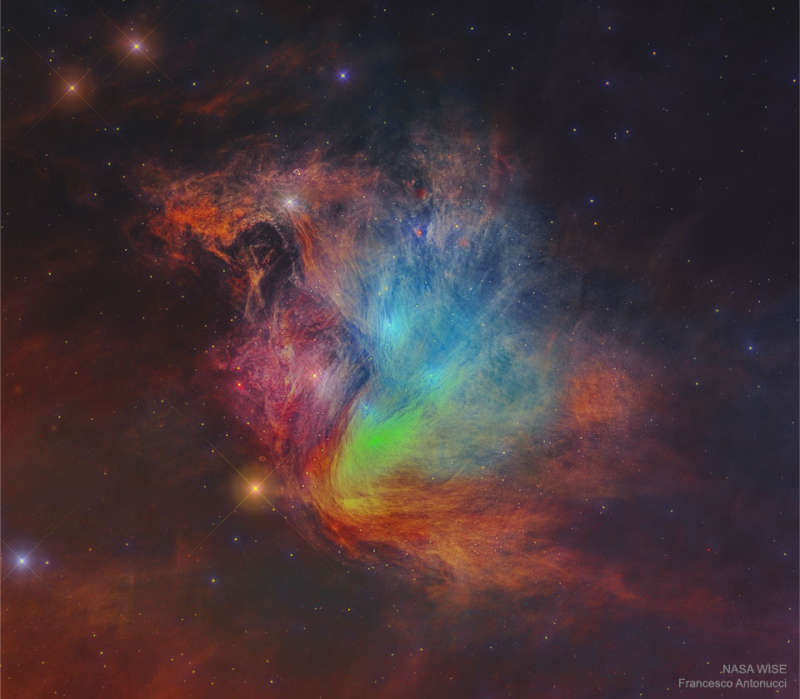
|
Explanation: Is this really the famous Pleaides star cluster? Known for its iconic blue stars, the Pleaides is shown here in infrared light where the surrounding dust outshines the stars. Here three infrared colors have been mapped into visual colors (R=24, G=12, B=4.6 microns). The base images were taken by NASA's orbiting Wide Field Infrared Survey Explorer (WISE) spacecraft. Cataloged as M45 and nicknamed the Seven Sisters, the Pleiades star cluster is by chance situated in a passing dust cloud. The light and winds from the massive Pleiades stars preferentially repels smaller dust particles, causing the dust to become stratified into filaments, as seen. The featured image spans about 20 light years at the distance of the Pleiades, which lies about 450 light years distant toward the constellation of the Bull (Taurus).
Follow APOD on:
Facebook,
Google Plus,
Instagram, or
Twitter
|
January February March April May June July August September October November December |
| ||||||||||||||||||||||||||||||||||||||||||||||||
NASA Web Site Statements, Warnings, and Disclaimers
NASA Official: Jay Norris. Specific rights apply.
A service of: LHEA at NASA / GSFC
& Michigan Tech. U.
Based on Astronomy Picture
Of the Day
Publications with keywords: pleiades - dust - open cluster - infrared
Publications with words: pleiades - dust - open cluster - infrared
See also:
- APOD: 2025 August 28 Á Galaxies, Stars, and Dust
- APOD: 2025 August 25 Á The Meteor and the Star Cluster
- APOD: 2025 August 7 Á The Double Cluster in Perseus
- APOD: 2025 July 8 Á The Pleiades in Red and Blue
- APOD: 2025 April 28 Á Gum 37 and the Southern Tadpoles
- APOD: 2025 April 8 Á Moon Visits Sister Stars
- APOD: 2025 March 5 Á Seven Sisters versus California
